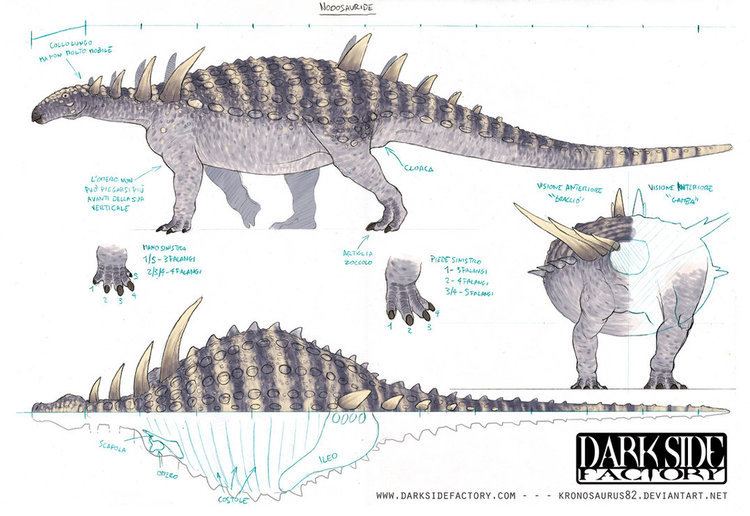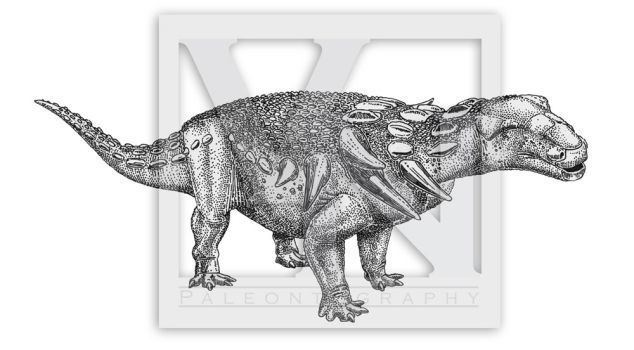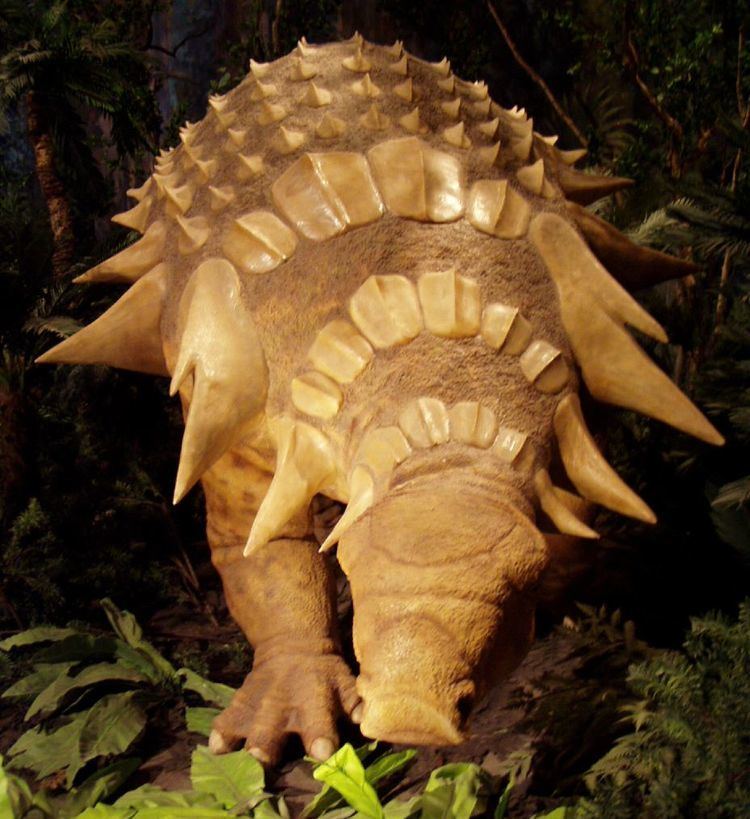Clade Dinosauria Higher classification Ankylosauria | Phylum Chordata Scientific name Nodosauridae Rank Family | |
 | ||
Lower classifications | ||
Nodosauridae is a family of ankylosaurian dinosaurs, from the Late Jurassic to the Late Cretaceous Period of what are now North America, Europe, Asia, and Antarctica.
Contents

CharacteristicsEdit

Diagnostic characteristics for the Nodosauridae include supraorbital boss rounded protuberance, occipital condyle derived from only the basioccipital, and ornamentation present on the premaxilla. There is a fourth ambiguous characteristic called the acromion, which is a knob-like process. All nodosaurids, like other ankylosaurs, may be described as medium-sized to large, heavily built quadrupedal herbivorous dinosaurs, possessing small denticulate teeth and parasagittal rows of osteoderms (a type of armour) on the dorsolateral surfaces of the body.
ClassificationEdit
The family Nodosauridae was erected by Othniel Charles Marsh in 1890, and anchored on the genus Nodosaurus.

The clade Nodosauridae was first defined by Paul Sereno in 1998 as "all ankylosaurs closer to Panoplosaurus than to Ankylosaurus," a definition followed by Vickaryous, Maryanska, and Weishampel in 2004. Vickaryous et al. considered two genera of nodosaurids to be of uncertain placement (incertae sedis): Struthiosaurus and Animantarx, and considered the most primitive member of the Nodosauridae to be Cedarpelta. The cladogram below follows the most resolved topology from a 2011 analysis by paleontologists Richard S. Thompson, Jolyon C. Parish, Susannah C. R. Maidment and Paul M. Barrett. The placement of Polacanthinae follows its original definition by Kenneth Carpenter in 2001.
BiogeographyEdit

The near simultaneous appearance of nodosaurids in both North America and Europe is worthy of consideration. Europelta is the oldest nodosaurid from Europe, it is derived from the lower Albian Escucha Formation. The oldest western North American nodosaurid is Sauropelta, from the lower Albian Little Sheep Mudstone Member of the Cloverly Formation, at an age of 108.5±0.2 million years. Eastern North American fossils seem older. Teeth of Priconodon crassus from the Arundel Clay of the Potomac Group of Maryland, which dates near the Aptian–Albian boundary. The Propanoplosaurus hatchling from the base of the underlying Patuxent Formation, dating to the upper Aptian, is the oldest known nodosaurid.

Polacanthids are known from pre-Aptian fauna from both Europe and North America. The timing of the appearance of nodosaurids on both continents indicates that the origins of the clade preceded the isolation of North America and Europe, pushing the group's date of evolution back to at least the "middle" Aptian. The separation of Nodosauridae into European Struthiosaurinae and North American Nodosaurinae by the end of the Aptian provides a revised date for the isolation of the continents from each other by rising sealevels.

Below is a table showing the age difference between continents. North American nodosaurids are teal, European nodosaurids are green, European polacanthids are blue, and North American polacanthids are brown. Other nodosaurids or polacanthids are black. This table supports the observations by Kirkland et al. (2013).

